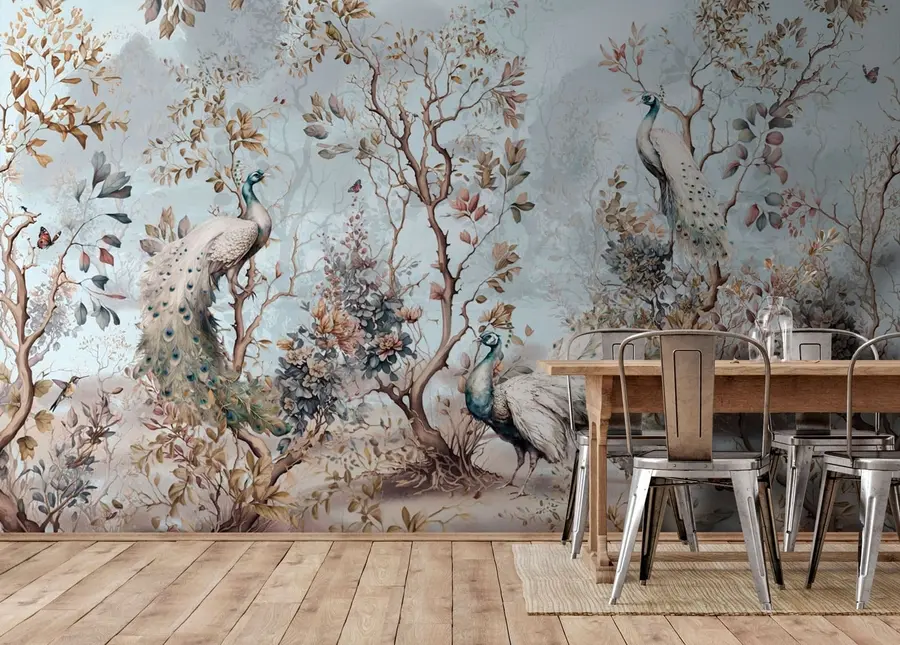Enchanting Walls: The Allure of French Wallpaper
The Artistic Legacy of French Wallpaper
French wallpaper has long been synonymous with elegance, artistry, and sophistication. Dating back to the 17th century, French artisans have mastered the craft of wallpaper design, transforming it from mere wall covering to an art form. The inception of Papier peint français can be traced to the reign of Louis XIV, who fostered the arts and crafts within France. Under his patronage, the first French wallpaper manufactory was established, paving the way for innovations in design and production. This historical foundation set the stage for what would become an enduring legacy, with French wallpaper renowned for its intricate patterns, vibrant colors, and luxurious appeal.
Evolution Through the Centuries
Over the centuries, French wallpaper has evolved dramatically, reflecting changes in artistic movements, technology, and societal tastes. The 18th century saw the Rococo style dominate, with its ornate, asymmetrical designs featuring floral motifs and pastoral scenes. This period was marked by the works of Jean-Baptiste Réveillon, whose factory produced some of the most exquisite wallpapers of the time, often commissioned by the French aristocracy. The 19th century introduced panoramic wallpapers, such as those produced by Zuber et Cie, which depicted expansive, detailed landscapes and historical scenes. These panoramic designs were revolutionary, offering a window into far-off places and grand vistas, transforming ordinary rooms into immersive environments.
The Craftsmanship Behind the Beauty
The creation of French wallpaper is a testament to meticulous craftsmanship and artistic skill. Traditionally, the process begins with the design phase, where artists draft intricate patterns, often inspired by nature, mythology, and history. Once a design is finalized, it is transferred onto woodblocks or metal plates for printing. Each color in the pattern requires a separate block or plate, and the paper is printed layer by layer, with careful alignment to ensure precision. This technique, known as block printing, is labor-intensive but yields richly textured and detailed wallpapers. In modern times, digital printing has supplemented traditional methods, allowing for even more intricate designs and greater production efficiency while still maintaining the high standards of artistry associated with French wallpaper.
Influence and Inspiration: French Wallpaper in Modern Decor
French wallpaper has transcended its historical roots to influence contemporary interior design profoundly. Its timeless appeal lies in its ability to blend classic elegance with modern aesthetics. Designers today often incorporate French wallpaper into eclectic interiors, juxtaposing it with minimalist furnishings to create a striking contrast. The versatility of French wallpaper allows it to enhance various spaces, from chic Parisian apartments to grand country homes. Contemporary collections frequently draw inspiration from historical designs, reimagining them with modern color palettes and materials. This fusion of past and present ensures that French wallpaper remains a relevant and cherished element of interior décor.
Preservation and Revival of Tradition
The preservation and revival of traditional French wallpaper techniques are essential for maintaining this rich cultural heritage. Many historic wallpapers have been carefully restored and conserved in museums and heritage sites, showcasing the enduring beauty and craftsmanship of these pieces. Companies like Zuber et Cie continue to produce wallpapers using traditional methods, ensuring that the skills and knowledge of past artisans are not lost. Additionally, there is a growing appreciation for handcrafted wallpapers in the modern market, with consumers valuing the uniqueness and quality of these products. By supporting the preservation and revival of traditional techniques, we ensure that the art of French wallpaper continues to enchant and inspire future generations.
Conclusion
French wallpaper is more than just a decorative element; it is a celebration of art, history, and craftsmanship. From its origins in the 17th century to its continued influence in contemporary design, French wallpaper represents a unique blend of tradition and innovation. The intricate designs, meticulous production processes, and timeless appeal of French wallpaper ensure that it remains a beloved aspect of interior décor. As we look to the future, the preservation and appreciation of this artistic heritage will allow us to continue to enjoy the beauty and elegance of French wallpaper for many years to come.
Stay in touch to get more updates & news on Vyvy Manga !






